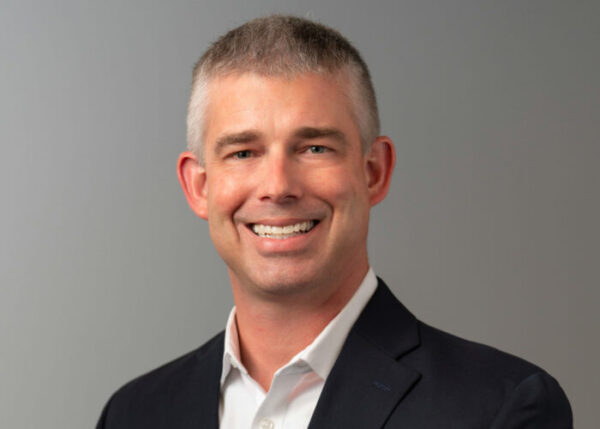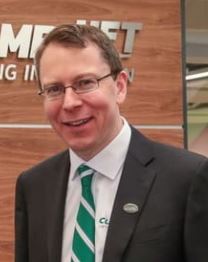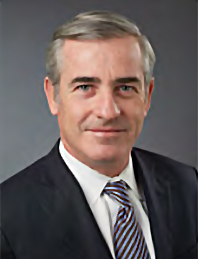 Eileen Mozinski Schmidt
Eileen Mozinski Schmidt Safety on the job gets personal
In-person training, a deliberate hiring process, and ongoing safety conversations are a few of the ways some in the industry suggest maintaining a safe warehouse.
To David Hoover, safety is a highly personal issue. Hoover, president of Forklift Training Systems, had a close perspective of about 10 workplace fatalities during his career. “I’ve seen what it does to families. I have seen people so badly injured they don’t live their lives right,” he said. “To me, it’s a personal thing.”
Hoover does not think that regulations can be the only measure driving safety forward. He stressed that businesses themselves also need to continue to strive for improvements. And he worries that accidents will be more of a concern as production ramps up post-pandemic. “We’re not seeing a lot of accident trends come down. The more we work, the more people we kill and injure,” Hoover said.
But there are steps organizations can take to build a culture of safety, Hoover said.
He recently worked with a large Ohio facility where leadership was willing to shut down production lines and pull 300 to 400 people out of its 5,000-person staff at a time for hourly safety training sessions with Hoover.
“It was a huge commitment. It was the right thing to do,” Hoover said. “We had tremendous success with that. It really opened the dialogue at the plant.” It is the kind of effort that yields results, according to Hoover, who said safety training during orientation is typically not specific enough to cover ongoing operations.

Doug Riddle
Hoover’s company is now part of Fleet Team Inc., which works with Fortune 500 companies across the country, according to Doug Riddle, president.
Fleet Team is a strategic, brand-independent consulting partner focused on empowering businesses to optimize their fleet management practices, according to the business website. This is accomplished through cutting-edge cost-saving initiatives, real-time data analytics, streamlined vendor management, and seamless facility-wide logistics, the site said.
Riddle said the perspective at Fleet Team is that safety is driven by decisions at the corporate office, particularly with the leadership of environmental health and safety leaders.
And one of the largest concerns driving safety trends lately has been the fluctuating labor force, according to Riddle. “The biggest thing we hear about is turnover in labor. It’s the biggest stumbling block,” he said, noting how turnover can make it a challenge to keep OSHA-certified truck drivers on staff. Riddle said his company advises keeping up-to-date equipment and certification lists to help ensure better safety.
Hoover recommends working with Human Resources to make sure workers can safely operate equipment. “I’m finding a disconnect between HR and safety within organizations,” said Hoover, noting that he has looked into some online equipment safety certification programs and found major concerns.
In one case, Hoover said he failed all the written tests and yet still was granted certification. “They sent a (certification) card that looked better than my driver’s license,” he said.
To prevent workers with not enough training or the correct certifications, Hoover said careful steps should be taken in the hiring process. “What I tell companies is, when you’re hiring the people ask the right questions,” he said.
Hoover noted an example of an interviewee who claimed ten years of forklift driving experience but had actually only driven a forklift for a few days ten years earlier. “This guy should not be driving,” said Hoover, who recommended having job candidates show how well they can operate equipment in the interview. “You can save a lot of time,” he said. “Safety ought to be intimately involved in those early (hiring) discussions,” Hoover added.
Technological developments will continue to offer safety improvements, both Hoover and Riddle agreed. They noted after-market developments, AI additions, and more occurring within the industry.
“Everybody is doing it a little differently. It’s saving lives. It’s going to save more as it becomes mainline and as acquisition costs come down,” said Hoover, drawing comparisons of forklift technology updates to auto improvements that are now standard industry-wide.

Martin McVicar
Combilift recently unveiled the Combi Safe-Lift, an anti-overload device. The lift incorporates a strain sensor on the mast section and a lift cut-out valve on the hydraulic line to disable lifting if the unit is potentially overloaded, according to a press release. “We believe that this simple and cost-effective system should become a standard option on all counterbalance trucks in the future,” said Martin McVicar, managing director of Combilift, in the statement.
“Fitting a straightforward device such as the Combi Safe-Lift is an effective way to reduce risks for the operator and other personnel, and also to avoid product damage as well as costly repairs,” he said.
At Fleet Team Inc., Riddle said he believes safety is top-of-mind for all of the business’ customers. “We recognize that. That’s why we partnered up with David; brought them into the fold so we can offer safety as a top-of-mind approach,” Riddle said.
An event focused on safety
Safety will be the focus at the 2024 National Forklift Safety Day on June 11 in Washington, D.C.

Brian Feehan
“It’s also streamed live. You can watch it from anywhere,” said Brian Feehan, president of the Industrial Truck Association. Cesar Jimenez, Toyota, vice president of regulatory affairs, is the chair of this year’s event. “We’ve had some really good chairs and Cesar is right in line,” said Feehan, who said this is the 11th year of the event.
This year, there will be a focus at the event on technology and the role it can play, along with emphasizing the importance of training, according to Feehan. “We always like to say that there’s no substitute for in-person training,” he said.
And Feehan said the ITA always recommends working with manufacturers to find out what training programs they suggest. “Every forklift performs different roles in different environments,” he said.
Another area of focus at National Forklift Safety Day will include safety culture within organizations, OSHA updates, and more.
The event has grown considerably in recent years. Feehan said after organizers found a high level of interest in the online option, they decided to continue offering a streaming option. “To me, it was enlightening to utilize tech to get that bigger audience,” he said, noting around 800 people attended the second all-virtual event during the pandemic. “Once we saw the opportunity that having a hybrid approach can do in terms of spreading awareness, there was no way to go back.”
The in-person event offers a networking opportunity and those online will also be able to participate, said Feehan, who said those attending virtually will be encouraged to submit questions.
National Forklift Safety Day is also a time to encourage industry members to host their own open house events, Feehan said. “We’re trying to push that again. It’s an excellent opportunity for people to get engaged,” said Feehan, who said the ITA offers information to help in coordinating open houses.
The success of National Forklift Safety Day has spread to other parts of the world as well, according to Feehan, who said ITA counterparts in other parts of the world within the Alliance of Industrial Truck Organization are offering similar events. “We’re pleased that our partner organizations around the world have adopted our Safety Day initiative,” he said.
Inspecting for safety
A key element for ensuring safety is warehouse inspections.
Peachtree Warehouse Solutions is built around the need for anchor inspections, according to a warehouse consultant at Peachtree. He said the inspection business started out after the owner of Peachtree, Patrick Deleon, perceived the need for inspections on the install side of things, and for consulting on warehousing and logistics.
The demand for anchor inspections has been expanding from the West Coast, and this Peachtree warehouse consultant said he believes requests will grow as more counties across the country require these inspections. Although the rise in inspection requirements was pushed forward from the West by the danger caused by earthquakes, the need had been growing due to injuries and deaths caused by equipment accidents in the warehouse. “Older warehouses often have zero anchors, not all anchors installed, or the wrong sizes installed,” he said, “without these anchors, if any forklift or piece of equipment bumps the racking it can cause the racks to fall. Especially when the racks are overloaded, which they sometimes are.”
According to this teammate, the inspections by Peachtree Warehouse Solutions include checking for the correct anchor depth and embedment, as well as the number of anchors, on equipment like conveyors, mezzanines, and pallet racks. “Lots of damage happens in workplace accidents, and the anchors keep the racks from tipping until they can be replaced,” he said.
Peachtree Warehouse Solutions has been working on inspections in Georgia and the Carolinas and has been receiving requests from a growing geographic reach looking to protect their people and warehouses.
Inspection needs are born out of a variety of reasons, including meeting mandated inspection requirements, bringing older warehouses up-to-date, and more. “The good thing is fresh eyes” within a warehouse, the consultant said, of the benefit of an inspection.
“We’ve seen a ton of safety managers and individuals from the West Coast come to the southeast or East Coast asking questions” about safe installs, he said. “I think it’s going to keep continuing to catch people’s attention.”
As the industry grows, this consultant envisions this need continuing to expand. “We are seeing warehousing just booming,” he said. “Demand is going to increase. I think the inspection piece is going to follow suit as safety awareness grows.”
About the Author:
Eileen Mozinski Schmidt is a writer and journalist based in the Greater Milwaukee area. Email [email protected]. If your company would like to be featured, email [email protected]









